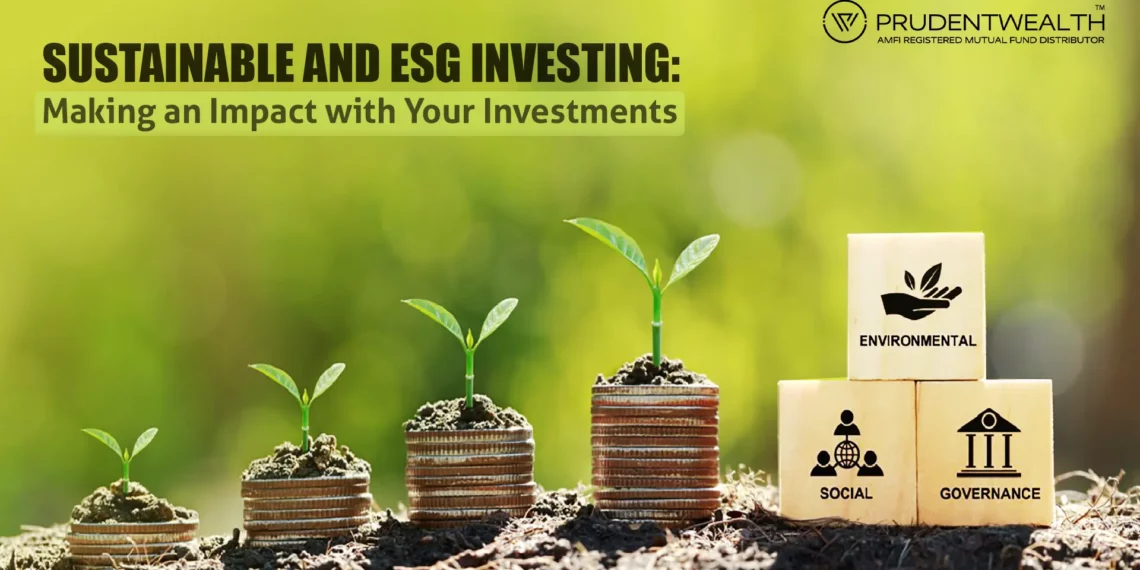Introduction
In recent years, a growing number of investors have started to embrace sustainable and ESG (Environmental, Social, and Governance) investing. This approach goes beyond merely seeking financial returns and aims to generate positive impact in the world. By aligning investment decisions with values and considering environmental, social, and governance factors, individuals can contribute to a more sustainable and equitable future while potentially earning attractive returns. In this blog, we will explore the concept of sustainable and ESG investing, its benefits, and how you can get started on your journey to making a positive impact with your investments.
Understanding Sustainable and ESG Investing
Sustainable and ESG investing involves integrating environmental, social, and governance considerations into investment decisions. Let’s break down what these factors mean:
1. Environmental: This aspect focuses on a company’s impact on the environment. It considers factors such as carbon emissions, renewable energy usage, waste management practices, and resource efficiency.
2. Social: Social factors assess a company’s impact on society. These factors may include labor practices, employee relations, diversity and inclusion, community engagement, and consumer protection.
3. Governance: Governance factors evaluate the leadership, structure, and decision-making processes within a company. Areas of focus may include board independence, executive compensation, shareholder rights, and transparency in financial reporting.
Benefits of Sustainable and ESG Investing
1. Positive Impact: By investing in companies that exhibit strong ESG practices, you can contribute to positive change in areas such as climate action, social equality, and responsible governance. Your investments can support companies that prioritize sustainability and drive improvements in their industries.
2. Long-Term Value: Companies with robust ESG practices are often better equipped to manage risks and seize opportunities in a changing world. By considering these factors, investors can identify companies that are more likely to deliver long-term value and sustainable returns.
3. Risk Management: Evaluating ESG factors helps identify potential risks that could impact a company’s financial performance. For example, companies with poor environmental practices may face regulatory challenges or reputational damage. By taking these factors into account, investors can make more informed decisions and mitigate potential risks.
4. Investor Engagement: Sustainable and ESG investing encourages active shareholder engagement. Investors can use their ownership rights to influence companies’ practices, policies, and disclosures. By engaging with companies, investors can advocate for positive changes and hold them accountable for their actions.
Getting Started with Sustainable and ESG Investing
1. Define Your Values and Goals: Reflect on the environmental and social issues that matter to you. Determine your investment objectives and the impact you want to make through your investments.
2. Research and Analysis: Look for investment options that align with your values and meet your financial goals. Several financial institutions and asset managers offer sustainable and ESG investment products and services. Research their investment strategies, track records, and ESG integration practices.
3. Assess ESG Metrics: Review the ESG performance of companies or funds you are considering. Various rating agencies and data providers assess companies’ ESG performance and assign ratings or scores. Look for companies that excel in areas that align with your values.
4. Diversify Your Portfolio: As with any investment strategy, diversification is crucial. Spread your investments across different asset classes, sectors, and regions to mitigate risks and capture opportunities in sustainable and ESG-focused companies.
5. Monitor and Engage: Regularly review the ESG performance of your investments and stay informed about industry trends and developments. Engage with companies through proxy voting, dialogues, and shareholder resolutions to advocate for positive change.
Conclusion
Sustainable and ESG investing provides an opportunity to align your financial goals with your values and contribute to a more sustainable and equitable future.
For more information, reach us at [email protected]









